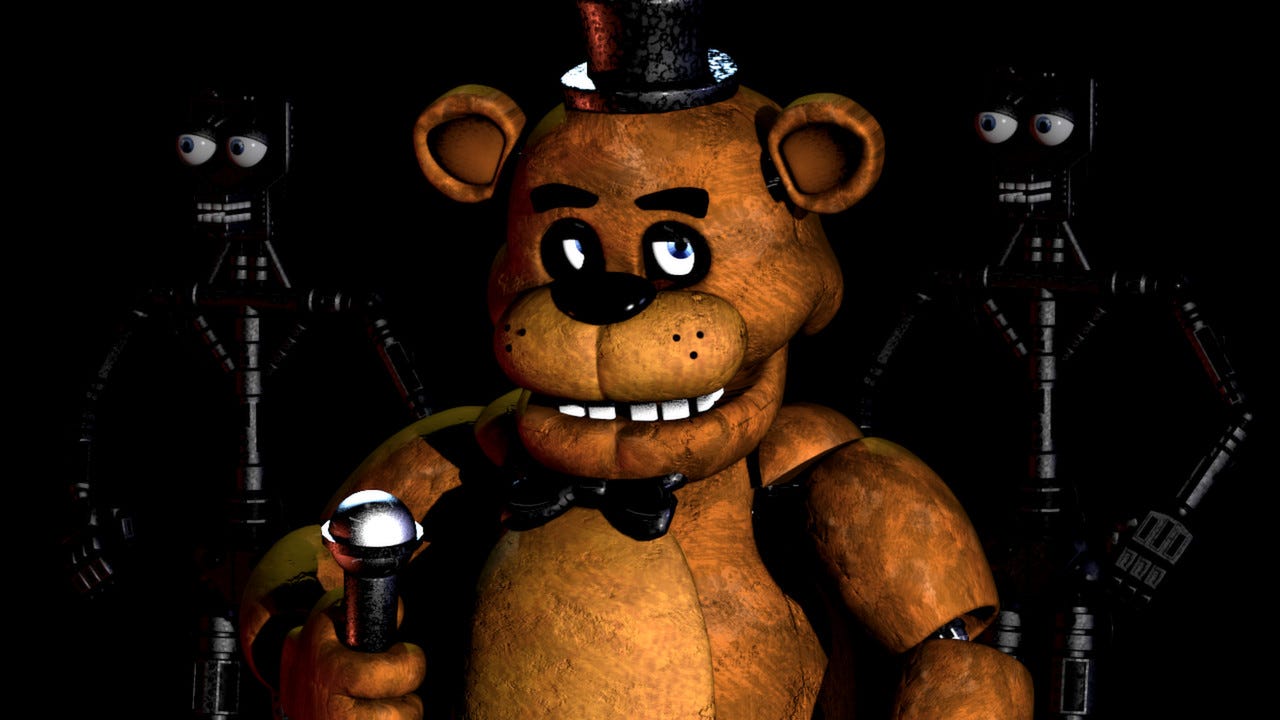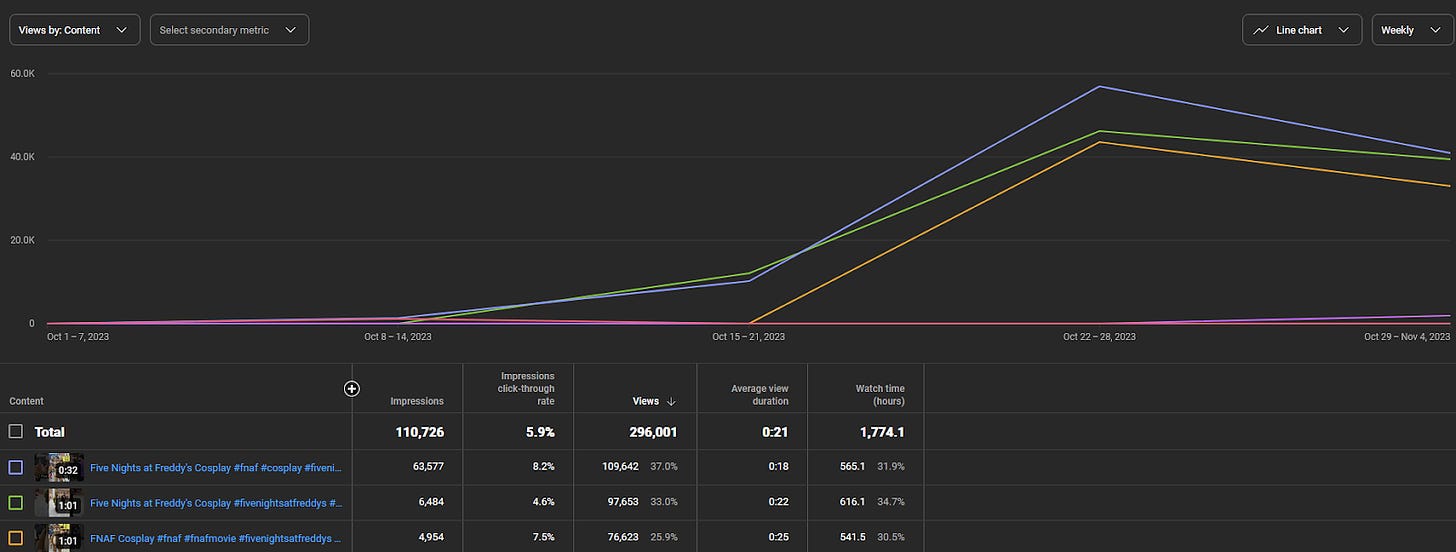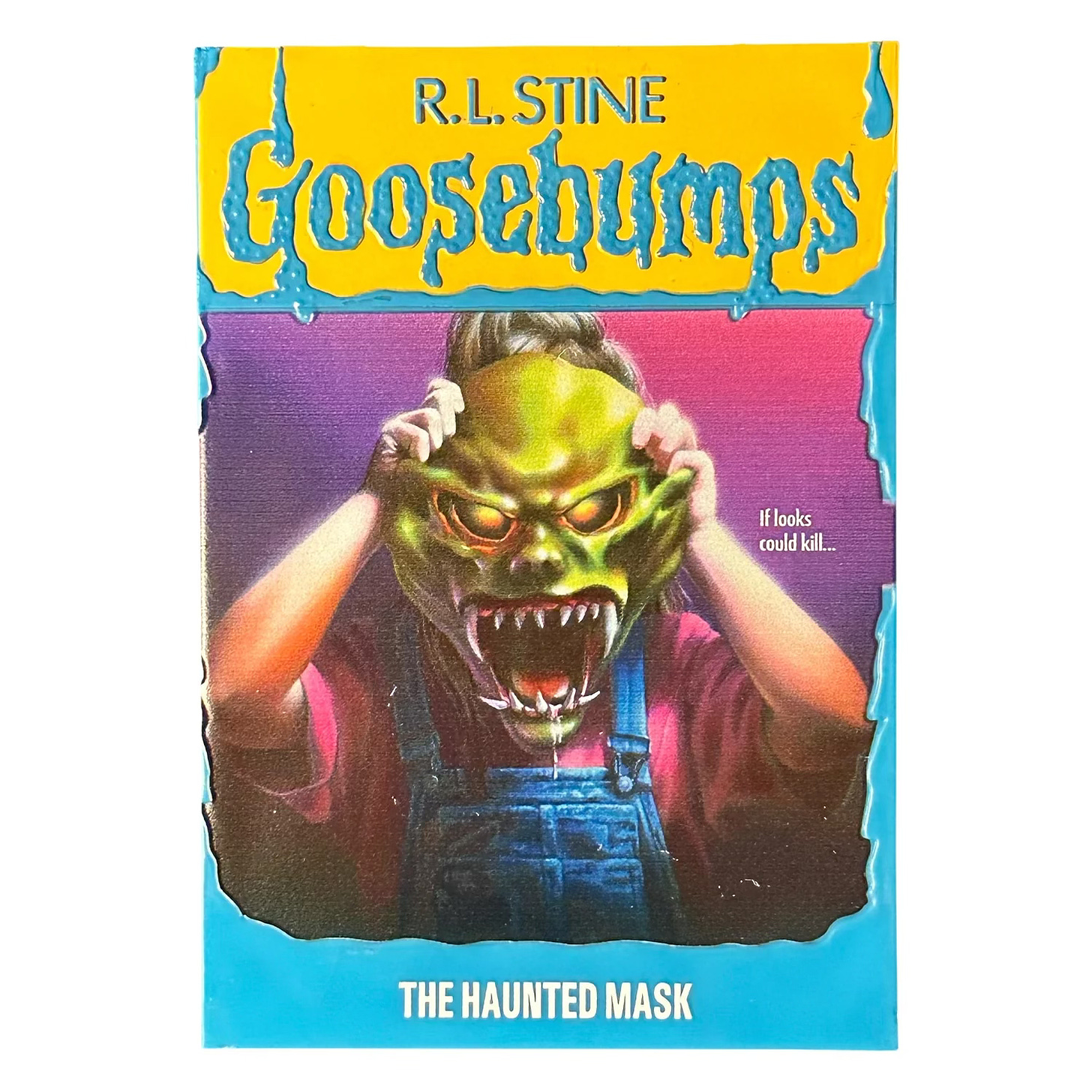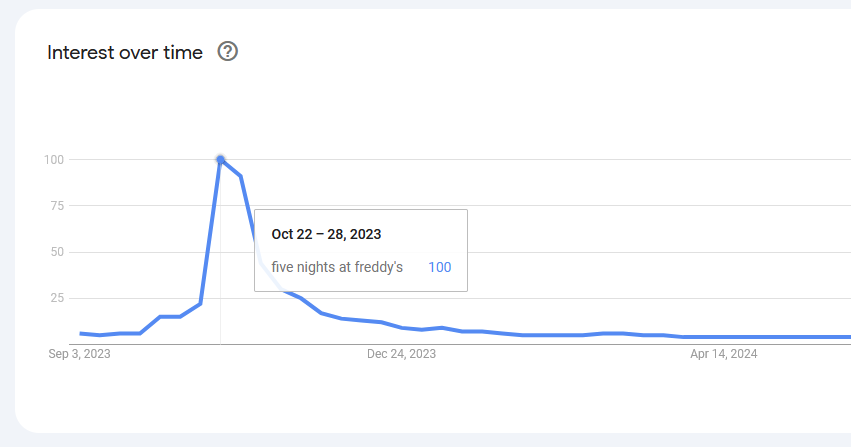How Accidentally Going Viral With Five Nights at Freddy’s Helped Me Understand It
Horror stories and games that don’t cross important lines can be a great form of catharsis for vulnerable populations like children.
I’m open to running—and paying for!—more pitches at Crossplay, even from those without a byline. I’m more interested in life experience than work experience. Drop me an email. -pk
In 2010, I was one of those goofy teenagers making videos using a digital camera and Windows Movie Maker when YouTube was still a platform people barely understood. Compared to now, there was an even less tenable path to monetization back then:
Step 1) Numbers go up.
Step 2) ???
Step 3) Profit?
I had gotten in the habit of streaming and uploading content after the pandemic to stay in touch with my creative practice after grad school, feel productive, and connect with others during the days of quarantine. In October 2023, I went to New York Comic Con as part of an annual ritual.
Towards the end of some walking video footage, there it was: surrounded by guests in the middle of the convention floor, a cosplayer in a large brown mechanical suit, exposed gears for faux animatronic legs, with big bulging eyes, a wide mouth with large white teeth, a bear topped off with a top hat and a spiffy bowtie. The Freddy Fazbear performer thrust out his arms, intimating a malevolent bear hug.
I sensed there would be an audience for FNAF videos after analytics for my Undertale playthrough showed strong engagement for FNAF content. But it was just another experiment like the rest of my shorts from Comic Con. Honestly, I thought my Final Fantasy cosplay shorts were going to do better.
Freddy got himself a thousand views, and I thought that would be the end of it.
But then, a week later, it got two thousand in a day, then thousands a day, then several hundred thousand views. Jazzed by what might be a big break, I watched dozens of hours of video tutorials, podcasts, and shorts, all to figure out how to make YouTube shorts place well for the algorithm. Tagging and metadata, thumbnail optimization, captioning for the large percentage of audiences watching on mute, understanding how to drive engagement being fed into YouTube’s rapid A/B testing.
I had become obsessed with trying to cross the three million view threshold for monetization. Researching, learning about YouTube, and FNAF with dozens of hours of my spare time. It was starting to engulf my whole life. After uploading YouTube Shorts with all the variations of FNAF cosplay I could edit, uploading convention footage, my channel exploded to two million views.
In October 2023, my FNAF shorts got two million views (Source: YouTube Studio)
But as I was doing this, I started to wonder, what exactly was FNAF? Why should I care? And why did young people care so much?
Under the Horror Hood
Five Nights at Freddy’s is a horror game franchise featuring Chuck E. Cheese-like animatronics come to life to terrorize the player. It’s popular with teenagers, and translated its popularity into a hit 2023 film.
According to Statista, 29% of time is spent daily on YouTube by Gen Z video consumers. Gen Z is 93% of the share of digital video users worldwide as of June 2023, compared to 94% of Millennials, 88% of Gen X, and 78% of Baby Boomers.
There’s a market for the teen horror genre that YouTube speaks to and FNAF is a premier franchise that speaks to that demographic.
YouTube Hall of Famer Markiplier got his big break through a FNAF Let’s Play series, the first video of which has 119 million views, as of writing this. It combined his affable big brother antics, with his phobia of uncanny valley-esque figures in an entertaining combination for tweens. (He has since expressed some ambivalence about his enthusiasm for the game’s design.) Furthermore, fans loved chewing on the lore of the game, and YouTuber MatPat has fed the beast, with a playlist of 95 FNAF lore videos spanning many hours.
It’s important to note that this vicarious experience of FNAF is not just promotion for the games, but is a destination for experiencing the games. It’s highly likely that many FNAF fans’ experiences of the game were primarily through YouTube. Being a horror game experience that many youth audiences wouldn’t be able to purchase without a credit card, they can enjoy watching someone else’s horrified screams to the game’s tense and stressful gameplay, rather than play the game in its entirety themselves.
FNAF is a way of sitting with an older sibling like figure to experience something scary, but not too scary. For children, being able to experience fear but feel safe in a storytelling context is important.
One of the things I learned as an educational web game developer at Scholastic was that parents and teachers have high standards for what their children and students read and watch. But they also don’t have all the time in the world to research things. So having a trustworthy kid-friendly brand is incredibly hard to find, but once you do, you can have an incredibly loyal audience.
Spooky vs. Scary for Children
In a sense, young horror is a means of experimenting with the cusp of adulthood. In early child development, some media is actually way too frightening to be exposed to. For adults, who have a strong sense of fantasy and reality– the artifice of the creative process is too transparent, the framing of the camera and seams of the cloth stick out. However, for small children around the ages of 4-6, they can struggle with fantasy-reality distinction, the ability to understand that the scary things found in their imagination aren’t real.
However, for a magic middle age of development, there’s an age where indulging in light horror is both frightening and fun. A spooky haunted house is enjoyable at this age. 90s Nickelodeon horror anthology show Are You Afraid of the Dark was like Halloween candy to budding horror enthusiast Millennials. To actually create stories that frighten children well without going too far, is an impeccable balancing act that takes incredible care and sensitivity, and maybe even a legal department.
This quote from R.L. Stine of the Goosebumps book franchise, also published by my former employer Scholastic, captures a sense of that:
"My thinking is that these books are entertainment. I'm very careful to keep reality out of it. The real world is much scarier than these books. So, I don't do divorce, even. I don't do drugs. I don't do child abuse. I don't do all the really serious things that would interfere with the entertainment." - R.L. Stine, Writers Digest
Adults and kids experience horror media for the emotional kick that comes from being scared safely. When writing for young readers, it’s important to Stine that his readers know his stories are fantasy and can’t really happen.
Spooky vs. Scary for Adults
Horror stories and games that don’t cross important lines can be a great form of catharsis for vulnerable populations like children.
I played FNAF on a livestream once to check out the gameplay and analyze its game design, but after a few jump scares quickly got tired of it after that. My ability to experience horror from this game was limited by my experiences as an adult.
I dropped off on trying to monetize my YouTube channel. Three million shorts views in 90 days was too steep a requirement, and I didn’t have the patience for it. After hitting two million, the views started to taper off rapidly. As the hype around FNAF peaked at the end of October as per Google Trends, my audience continued to dwindle.
My FNAF shorts peaked in late Oct. 2023 and tapered off (Source: YouTube Studio, Google Trends)
As an adult, my distinction of fantasy-reality is developed, so FNAF is not something I would want to build a channel out of. I’m worried about capital-S Scary Realities, like chronic illness, taxes, the Federal Reserve, aging, the forward march of time, building a career to span several decades, the prospects of getting married or living forever alone, having kids, a dying planet, and humanitarian crises in the news.
Dwelling on any of those is nigh unthinkable to me. It’s exactly the sort of thing that can make a grown ass man indulge in the idea of becoming a content creator and building a YouTube channel around a children’s horror game franchise.
It’s times like these that make me think I should thank my mom and dad for doing their best to protect me from what they could. I hope the FNAF series can continue to entertain with its microcosm of frights and joys. As for me, I’ll let you know if I come up with how to effectively dwell on the world’s many crises in the future.
It might just be in a YouTube Short.
Charles H. Huang (he/him) is a game designer and writer, currently working on “The Games that Saved Me”, a mental health survival memoir told through the games he’s made and the games he’s played. Follow more of his writing at muditaheart.substack.com and his other socials at linktr.ee/muditaheart









I guess the downfall of paid journalism jobs.